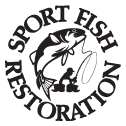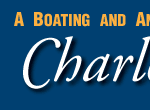CONTACT US:
Florida Fish and Wildlife
Conservation Commission
Fish and Wildlife
Research Institute
100 Eighth Avenue SE
St. Petersburg, Florida 33701
727-896-8626
|
|
|
Charlotte County
UF/IFAS Extension
Florida Sea Grant
25550 Harbor View Rd #3
Port Charlotte, Florida 33980
941-764-4340
|
|
|

|
|
Funding for this project was obtained through grants from the West Coast Inland Navigation District and Charlotte County.
|

|
|
Additional funding for this project was obtained through the Federal Aid in Sport Fish Restoration Fund.
|
|
|
 |
Simply put, aquatic preserves protect the living waters of Florida to ensure that they will always be home for breeding birds, fish nurseries, freshwater springs, salt marshes, seagrass meadows, and mangrove forests.
In 1975, with growing appreciation for their environmental diversity and alluring beauty, Florida enacted the Aquatic Preserve Act bringing existing preserves under a standard set of management criteria. This ensured that aquatic preserves' natural condition ... "their aesthetic, biological, and scientific values may endure for the enjoyment of future generations."
Today, Florida is fortunate to have 41 aquatic preserves, encompassing almost two million acres. The Florida Department of Environmental Protection's Office of Coastal and Aquatic Managed Areas oversees the management of these aquatic preserves, and, in cooperation with the National Oceanic and Atmospheric Administration, three National Estuarine Research Reserves (NERR) and one National Marine Sanctuary. Charlotte Harbor is home to five aquatic preserves: Lemon Bay, Cape Haze, Gasparilla Sound-Charlotte Harbor, Pine Island Sound and Matlacha Pass.
For more information about Florida's aquatic preserves, please visit Florida's Aquatic Preserves.
|
Lemon Bay Aquatic Preserve
Established in 1986, Lemon Bay Aquatic Preserve is an unique, submerged ecosystem of mangrove, seagrass, and oyster communities. It is located in southwest Florida in Sarasota and Charlotte Counties. The bay is a long, narrow estuarine system, running from just south of Placida, north almost to Venice. It is about 13 miles long and averages 3/4 of a mile wide.
|
Cape Haze Aquatic Preserve
Cape Haze Aquatic Preserve is east of Boca Grande, surrounded by the Gasparilla Sound-Charlotte Harbor Aquatic Preserve and the Charlotte Harbor Preserve State Park. This preserve is a maze of islands and shallow passages, where Catfish and Whidden Creeks meet Charlotte Harbor to mix with water from the Gulf of America.
|
Gasparilla Sound - Charlotte Harbor Aquatic Preserve
Gasparilla Sound - Charlotte Harbor Aquatic Preserve is the second largest estuary in Florida and the largest, deepest and most diverse of the five Charlotte Harbor Aquatic Preserves. Fresh water from the Peace and Myakka Rivers mixes with salt water coming through Boca Grande Pass from the Gulf of America.
|
Pine Island Sound Aquatic Preserve
Designated as an aquatic preserve in 1970, ine Island Sound Aquatic Preserve is the second largest of the five Charlotte Harbor aquatic preserves.In Pine Island Sound, waters from Charlotte Harbor, San Carlos Bay and the Caloosahatchee River mix with water from four passes to the Gulf of America.
|
Matlacha Pass Aquatic Preserve
Designated as an aquatic preserve in 1972, Matlacha Pass Preserve is shaped in a sinuous channel that winds between oyster bars, mangrove islands and seagrass flats. The preserve is the tidal node between Charlotte Harbor to the north and the Caloosahatchee River and San Carlos Bay to the south, with dark tannin-stained waters.
|
If you have any questions, comments, or suggestions about this Web site, please e-mail us at Boating_Guides@MyFWC.com.
Would you like to receive notices of changes to this Web site and the Boating and Angling Guide to Charlotte Harbor? If so, please e-mail us and include SUBSCRIBE-CHARLOTTE in the subject line.
|



